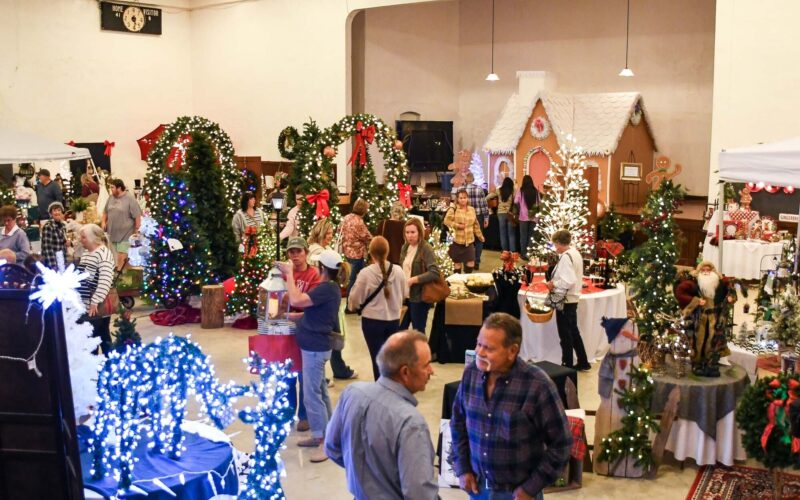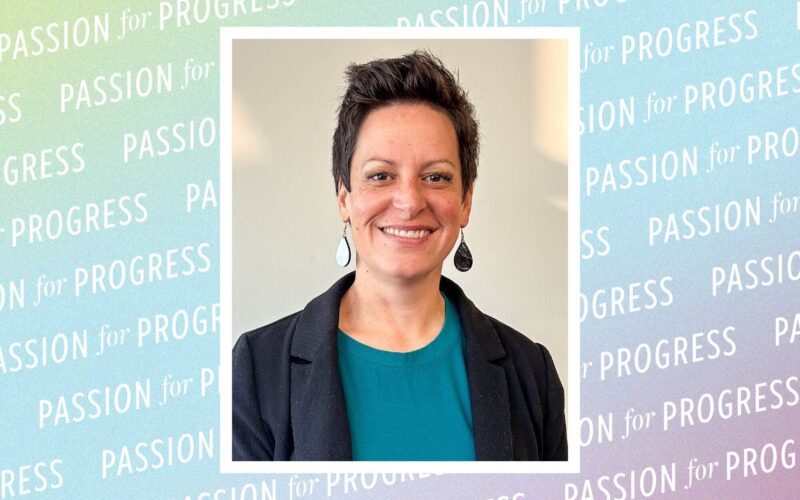PASSION & PURPOSE: SUMMER 2025
Opportunities to connect with nature and community abound thanks to grants and affiliates
Five years ago, during the onset of the COVID-19 pandemic, people across the country fell back in love with the great outdoors. Activities like hiking, biking, kayaking — even gardening — provided much-needed stress relief, physical exercise and connections with friends and neighbors in plentiful fresh air.
But heading outside is not easy for everyone, whether due to lack of awareness or limited ability. With that in mind, the CFO presented $66,000 earlier this year in the inaugural Everyone Outdoors Grant Program. The grants supported eight projects — two of which are described in these pages — that make nature more accessible to Springfield residents. The second year of the Everyone Outdoors program will expand to the CFO’s entire service area.
Recent grants from the CFO’s regional affiliate foundations and impact partnerships, like the Louis L. and Julia Dorothy Coover Charitable Foundation and the L-A-D Foundation, support similar endeavors to give residents a greater sense of place and give out-of-towners more reasons to visit their communities.
Below you’ll find seven reasons to head outside and connect with community — all supported by the power of place-based philanthropy.
American Indian Center’s Outdoor Workshops
"In Indigenous culture, we use animal parts, feathers — things like that — in ceremonies,” says Valerie Badhorse. “Our dancing, our powwows, our stories are all about animals because we lived together with them.”
But for families in more urban areas like Springfield, that deep connection to nature isn’t always easy to maintain. “Being urban makes it harder to get that sense of connection,” Badhorse admits.
That’s why the American Indian Center of Springfield — where Badhorse serves as executive director — is hosting a series of outdoor activities this summer to help people, Indigenous or not, rebuild their relationship with the land. On June 24, that activity was nature journaling at the Springfield Conservation Nature Center — an event designed to spark curiosity, creativity and a renewed awareness of the natural world.
“This is kind of like reconnection,” says Hannah Scarborough, AICS’s cultural liaison. “The kids love being around each other; it builds an environment of community. And there are so many benefits to just being outside.”
Those benefits are clear to Kinzee Clark, a frequent participant. “Everyone seems happier by the time they leave than they did coming in,” she observes. “More connected.”
The event is part of AICS’s broader mission to celebrate and share Indigenous culture — and it’s made possible by a CFO Everyone Outdoors grant, which supports projects that connect people to the outdoors.
Upcoming event activities include foraging and natural dyeing; keep up with the calendar at aicspringfield.org/events.
—by Matthew Stewart
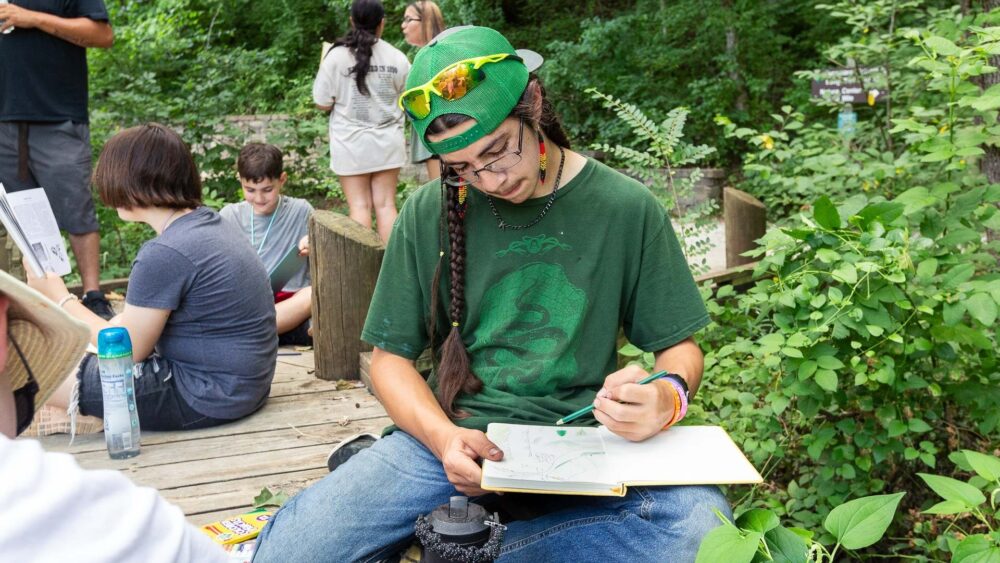
Photo by Aaron Scott.
Ava Senior Center Garden
The raised garden beds outside the Ava Senior Center grow cherry tomatoes, marigolds, lettuce, radishes — and community.
They exist because of hard work and green thumbs, but also through a 2023 grant from the CFO and the Coover Charitable Foundation. The funding allowed the senior center to construct the beds in an underused spot of the center’s parking lot, offering a splash of color, free produce, a sense of purpose and a point of connection.
“I think the community aspect of the garden is more important than the food that’s grown,” says Hannah Tate, the center’s administrator. “We have seniors who look forward to checking the progress of the garden each day they come in.” The produce supplements what is offered at the senior center. What’s not used is available for the seniors to take home.
“I wanted a garden here for the sense of community it brings,” Tate says. “It creates a commonality among our seniors.”
The key person behind those conversations is Blue Barringer (pictured above), who served as resident gardener until June. She experimented with different plants and ideas; this year included a new method of trellising and an attempt at broccoli. Others connected to the center are now tending the garden.
“Everybody had a garden at one point around here,” she says, noting those memories grow conversations. “People get excited, and I love that. That’s my thing — maybe I don’t have a lot of help in the garden, but people get excited to see things grow.”
—by Kaitlyn McConnell
Magic Dragon Trails System
Connection is at the heart of the Magic Dragon Trails System, an effort to bring more people together — from the area and beyond — around Lake of the Ozarks.
“We believe bringing this type of family-friendly activities will increase year-round tourism to the lake as well as benefit the community by adding inexpensive, recreational opportunities for residents,” says Stacy Pyrtle, president of the Community Foundation of the Lake, the CFO affiliate leading the effort.
The project includes trails designed for walking, biking, hiking, jogging, running, as well as wheelchair accessibility. Since work began in 2022, the group has built about two miles of trail and maintains 13.5 miles in the Lake of the Ozarks State Park — and more are in the works.
Among other plans, Pyrtle says the group expects to soon break ground for a trail that goes around the Osage Beach city park and into the state park. They are also working with the local Duenke family to finalize an easement for approximately three miles of trail.
“The future of this project looks bright as we have received lots of support and favorable comments about bringing additional trails and greenways to the area,” Pyrtle says, noting that the final goal is to have trails and greenways around the entire Lake of the Ozarks and eventually connect to the Rock Island Trail, another project the CFO has helped support.
“I may not see that in my lifetime,” Pyrtle says of the greater Magic Dragon plan, “but that is our ultimate goal.”
—by Kaitlyn McConnell
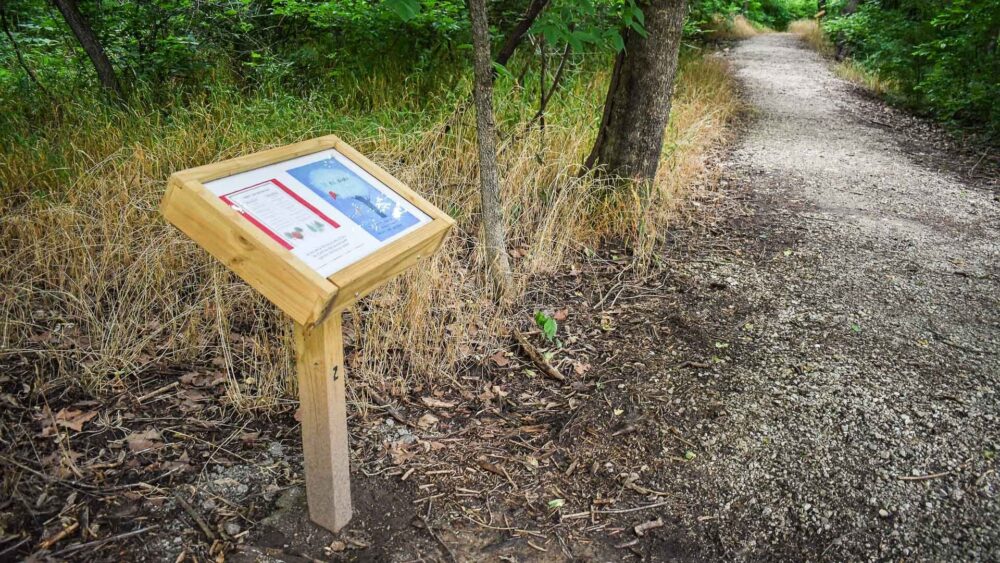
Photo by Kaitlyn McConnell
Stockton Trails Initiative Coalition’s Story Walk along Old Mill Trail
Stockton Trails Initiative Coalition takes literal steps to help people enjoy nature by maintaining and promoting local nature trails.
Kim Schmid, director of STIC, says the group’s goals include getting people outside and help them become stewards of the land — and to “get them off of the couch, outside with their family or friends building memories.”
There are several trails near the Cedar County seat that STIC — pronounced “stick” — promotes, like the Crabtree Trail and the eight-mile-long Lakeview Trail. Another is the Old Mill Trail, which is affectionately known as Aubree’s Trail in memory of Schmid’s daughter, who was in college studying wildlife conservation before she died in 2016.
Today, the one-mile trail features play equipment and a new story walk, a series of stations that hold pages of books. They are regularly swapped out, offering ongoing opportunities for families to enjoy stories along the trail (and a destination for the Cedar County Library’s story time).
“We really wanted something to blend in with nature, so these are all done in wood,” Schmid says, who notes the project represents a community project.
The U.S. Army Corps of Engineers placed the stations, which were built by local members of the American Legion. A grant from the Stockton Community Foundation supported the project, and the library — where Schmid serves as co-director — provides the books.
“That was a collaboration within itself, and that was awesome,” says Schmid.
In addition to physical spaces, STIC brings people together in figurative ways, too. The nonprofit regularly hosts events that merge nature and community, like its “first day” hikes on January 1, which in 2025 drew nearly 175 people (and nine dogs). STIC recently wrapped up a monthly hiking series; upcoming gatherings will feature a full-moon hike and swim and focus on the night sky.
For more information, visit stocktonmotrails.com.
—by Kaitlyn McConnell
James River Basin Partnership’s 100 Hours Outdoors
On a humid and sunny morning in late June, the fish at the Bois D’Arc Conservation Educational Fishing Pond are biting. A mere 15 minutes into the trip, nine-year-old Nolan lands a bluegill — his sister Quinn picks up a small catfish a bit later. (Little brother Henry even nabs a snapping turtle.)
This productive fishing trip is part of James River Basin Partnership’s 100 Hours Outdoors program, a twist on the national “1,000 Hours Outdoors” movement. “A study showed kids spend a thousand hours in front of a screen per year, so the goal is to match that with time outside,” explains Brooke Widmar, JRBP’s educational outreach coordinator. “We’re doing just a shortened version for the summer with 100 hours, to give these opportunities where people could get some hours outside and learn about nature or learn a new skill.”
JRBP’s mission is to improve and protect the water quality of James River’s watershed, and a big part of that project is building awareness and educating the public. “My boss always says ‘Connect with what you protect,’ Widmar says. “People aren’t going to protect the environment unless they care about the environment.”
For the kids, the day’s joy is simple and tangible: the thrill of a catch, of learning how to cast a line or bait a hook. But for JRBP, the hope runs deeper — that these hours outside will seed a lifelong love for the rivers, plants and wildlife that sustain the watershed’s communities.
The Bois D’Arc trip is one of several 100 Hours Outdoors events this summer, supported by a CFO Everyone Outdoors grant. For a full list of upcoming activities — including geology lessons and watershed exploration — visit jamesriverbasin.com/100hours.
—by Matthew Stewart
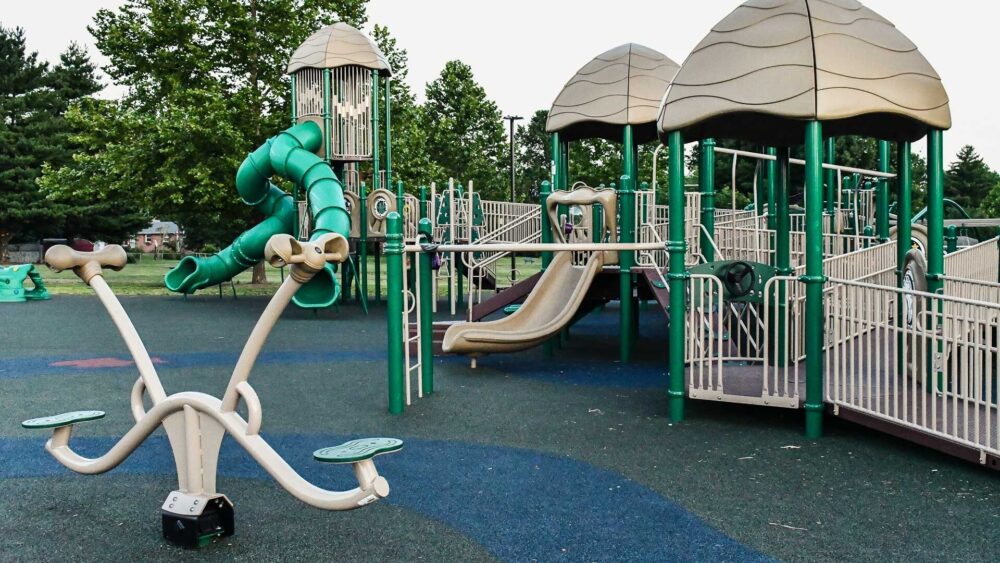
Photo by Kaitlyn McConnell
Better Together Playground at Jackson Street Park
Willard’s “Better Together” playground is an inclusive space that allows kids of all abilities to enjoy being outside. It was made possible in part by grants totaling $35,000 from the CFO and the Willard Children’s Charitable Foundation.
“The Better Together Playground has been an incredibly rewarding and impactful project for our community,” says Jason Knight, Willard’s director of parks. “Since opening, the playground has become a hub of activity. It’s rare to drive by and not see children and families enjoying the space.”
The playground, situated within the town’s Jackson Street Park, has tripled overall park attendance, Knight says. He notes one moment that particularly stood out was when a group of students visited during physical education class. They weren’t kids with special needs — but that was one reason Knight says he appreciated the scene.
“It is a play space for all children, regardless of ability,” he says. “Ultimately, this playground is more than just equipment — it’s a symbol of connection, inclusion and community pride. It’s a beacon of hope and joy, especially for those children who were previously on the sidelines, now given a place where they belong.
“For a small town like Willard to offer a park of this caliber — one that welcomes and accommodates children of all abilities — is truly extraordinary. It reflects the strength of our community’s vision and our commitment to ensuring that every child has the chance to play, connect and thrive.”
—by Kaitlyn McConnell
“A Forest Gospel” Documentary
Founded in the 1920s, Shannondale is a United Church of Christ mission in rural Shannon County, Missouri’s second-largest county with just 7,000 people for 1,000 square miles. The mission connects and serves locals through a number of enterprises, including a church, community activities, a craft store and a 4,040-acre tree farm — the latter of which is shared through one of two new documentaries that debuted in June at the Shannondale Community Center.
“We all thought we needed to capture these memories, these stories,” said Kathy Love, one of the project’s leaders. “It’s important to preserve them for future generations and for visitors who come and don’t know, don’t realize, how unique Shannondale is.”
Titled “A Forest Gospel,” the nature-focused documentary was funded by the L-A-D Foundation and the CFO. It focuses on Shannondale’s forest, said to be the oldest continuously operating tree farm in the state of Missouri. The land was procured starting in 1949 for $4 an acre through a campaign called Pennies for Shannondale. “20,000 people from all over the country helped purchase the Shannondale forest,” notes the documentary narrator.
Today, that forest is sustainably harvested, has a role in education, and helps support the ministry with sustainable income through carbon credits. “Shannon County produces more than twice the amount of timber than any other Missouri county,” notes the narrator. “The forests not only conserve the soil, air and water, they provide recreation and produce a crop: wood, which means an economic boost to the Shannondale community.”
At the premiere, locals had time for conversation and connection before circling up to share additional memories of Shannondale — the place that even today is described on its website as a center for “economic and environmental justice.”
Watch “A Forest Gospel” at cfozarks.org/shannondale.
—by Kaitlyn McConnell

